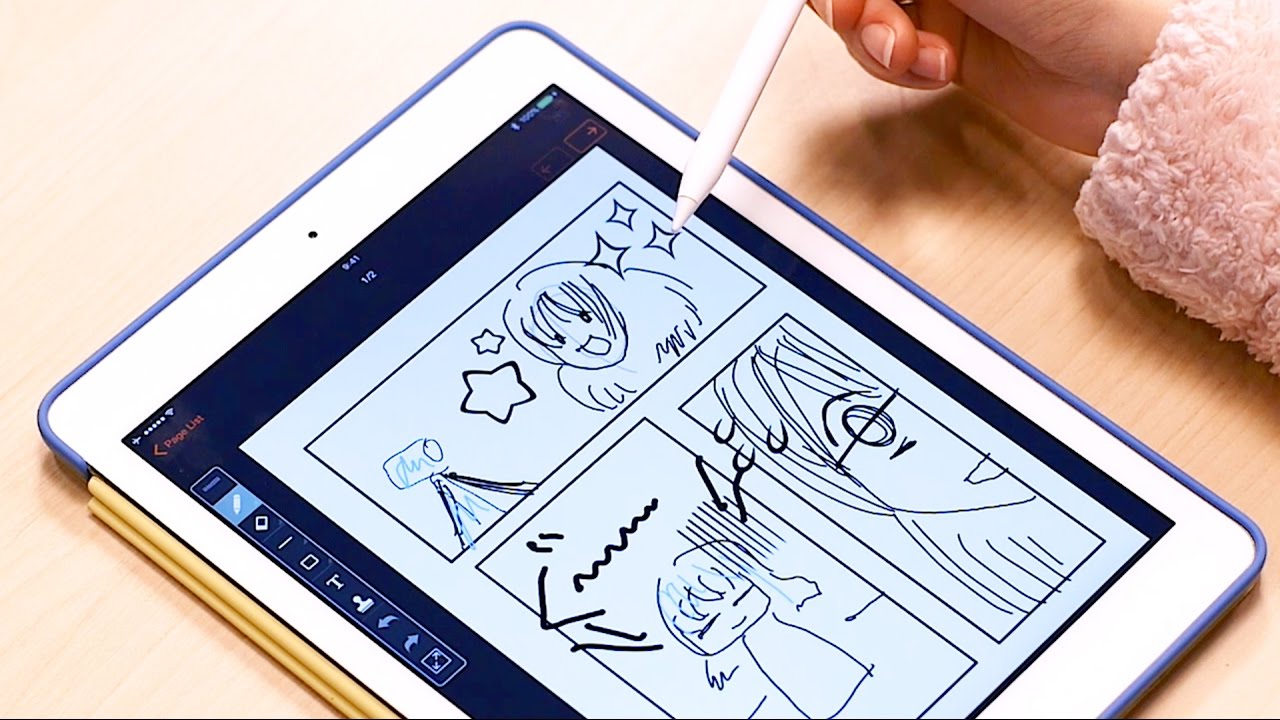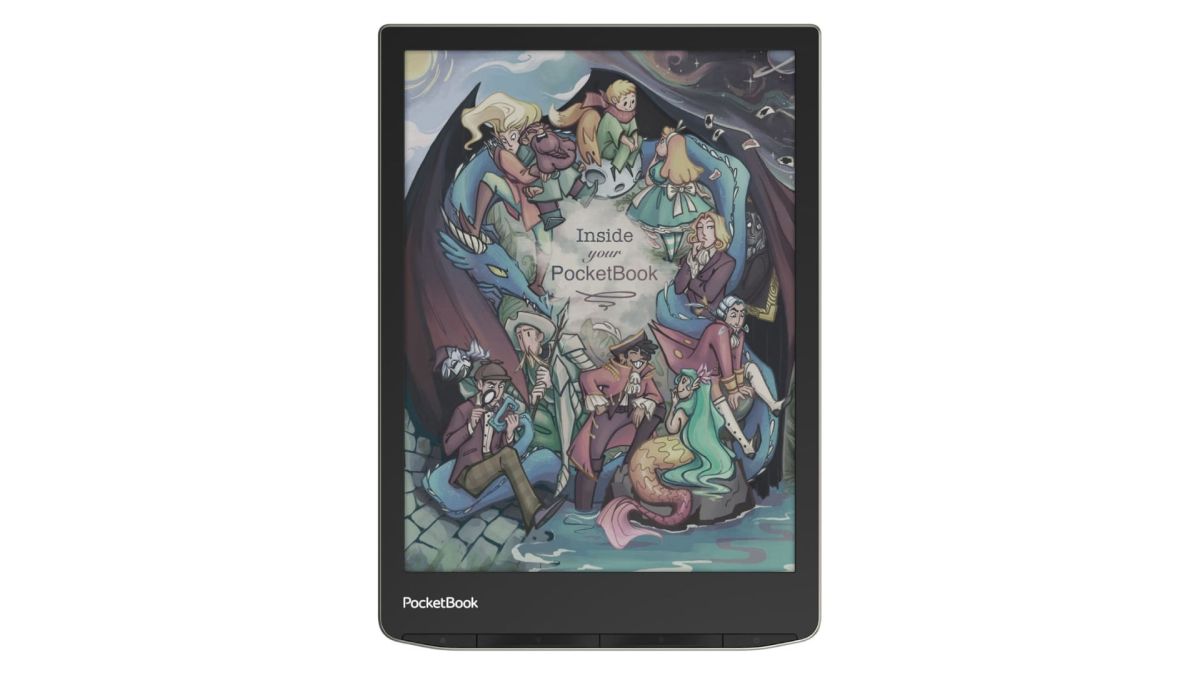Introduction
Welcome to the exciting world of manga drawing! Whether you’re a seasoned artist or a beginner looking to explore your creative side, this eBook will guide you through the fundamentals of manga drawing and help you develop your skills to create captivating artwork. Manga, a unique style of Japanese comic art, has become incredibly popular worldwide for its distinctive characters, expressive storytelling, and dynamic visuals.
In this eBook, we will delve into various aspects of manga drawing, covering everything from the basics to more advanced techniques. You will learn how to create expressive facial expressions that capture the emotions of your characters, how to depict dynamic body poses that convey action and movement, and how to master perspective and backgrounds to enhance your storytelling.
Designing unique and memorable characters is a crucial aspect of manga drawing, and we will explore techniques to help you develop your own distinct style. Additionally, we will discuss shading and highlighting techniques to add depth to your artwork, as well as how to apply colors effectively to bring your manga illustrations to life.
To truly make your manga illustrations stand out, we will cover how to incorporate special effects and sound effects, adding a sense of energy and impact to your drawings. And finally, we will delve into the aspects of publishing and sharing your manga, helping you understand the process of getting your work out into the world.
Whether you aspire to become a professional manga artist or simply want to enjoy the art of manga drawing as a hobby, this eBook will provide you with valuable insights and techniques to bring your characters and stories to life. So, grab your pencils, prepare your imagination, and let’s dive into the wonderful world of manga drawing!
Chapter 1: Getting Started with Manga Drawing
Are you ready to embark on your manga drawing journey? In this chapter, we will lay the foundation for your artistic endeavors by covering the essential tools and techniques you need to get started with manga drawing.
Before you begin, make sure you have a pencil, eraser, and paper – the basic tools of any artist. You may also consider investing in a set of drawing pens or markers to add more depth and precision to your artwork.
Once you have your tools, it’s time to understand the fundamental building blocks of manga drawing. Start by practicing basic shapes such as circles, squares, and triangles. These shapes serve as the basis for constructing the head, body, and other elements of your characters.
Next, let’s focus on proportions and anatomy. Manga characters often have exaggerated features, but it’s important to understand the underlying structure of the human body. Study reference images or anatomy books to familiarize yourself with the proportions of different body parts.
Now that you have a grasp of basic shapes and proportions, it’s time to tackle the art of sketching. Sketching is the initial step in manga drawing, where you lay down the rough outlines and shapes of your characters. Start with loose, light strokes and gradually refine your sketch as you add more details.
One aspect that sets manga apart from other styles is the use of exaggerated facial expressions. Emotions are integral to manga storytelling, and capturing these emotions in your characters’ faces is vital. Practice drawing various expressions – happiness, anger, sadness, etc. – and experiment with different eye shapes, mouth positions, and body language to convey the desired emotion.
Lastly, never underestimate the power of practice. The more you draw, the better you’ll become. Set aside regular practice sessions, dedicate time to studying other manga artists’ work, and be open to constructive feedback to continue honing your skills.
In this chapter, we’ve laid the groundwork for your manga drawing journey. Remember, getting started is often the hardest part, but with passion, patience, and practice, you’ll be well on your way to creating stunning manga artwork.
Chapter 2: Understanding Facial Expressions
Facial expressions play a crucial role in manga drawing, as they convey the emotions and personalities of your characters. In this chapter, we will explore the different elements of facial expressions and techniques to create expressive and impactful faces.
One of the key aspects of drawing facial expressions is understanding the underlying structure of the face. Start by familiarizing yourself with the basic proportions of the face, such as the placement of the eyes, nose, and mouth. Mastering these proportions will provide a solid foundation for creating realistic and dynamic expressions.
The eyes are often considered the “windows to the soul” in manga drawing. They can convey a wide range of emotions, from joy and excitement to sadness and anger. Experiment with different eye shapes, sizes, and positions to capture the desired mood. Pay attention to the position of the eyebrows as they can greatly influence the expression of the eyes.
The mouth is another crucial element in portraying facial expressions. The shape and position of the mouth play a significant role in conveying emotions. A slight tilt or curve of the lips can completely change the mood of a character. Practice drawing various mouth shapes, experimenting with open and closed mouths, smiles, frowns, and other expressions.
Don’t forget about the eyebrows and forehead, as they contribute to the overall expression. Raised eyebrows can indicate surprise or disbelief, while furrowed brows can convey anger or concentration. Understanding how these elements work together will help you create more compelling and nuanced facial expressions.
Another essential aspect to consider is the concept of “manga style” expressions. Manga often employs exaggerated expressions to heighten the emotional impact of a scene. These include large teardrops for crying, exaggerated sweat drops for stress or embarrassment, and stylized symbol-like elements to represent surprise, shock, or anger. Experiment with incorporating these elements into your artwork to add a distinct manga flavor to your character’s expressions.
Practice is key when it comes to mastering facial expressions. Study reference images, observe people’s faces in real life, and analyze how different emotions are expressed. Take the time to draw a variety of expressions, pushing yourself to capture the subtleties and intensity of different emotions.
In this chapter, we explored the significance of facial expressions in manga drawing. By understanding the structure of the face, experimenting with eye and mouth shapes, and incorporating manga-style elements, you’ll be able to create captivating characters that truly express their emotions.
Chapter 3: Creating Dynamic Body Poses
In manga drawing, dynamic body poses are essential for conveying action, movement, and energy in your artwork. In this chapter, we will explore techniques to create compelling and dynamic body poses that bring your characters to life.
Before diving into pose creation, it’s important to have a solid understanding of the human body’s anatomy. Study the proportions of different body parts and familiarize yourself with the skeletal structure and muscle groups. This knowledge will help you accurately depict the body in various poses.
Start by sketching stick figures to establish the basic pose and movements. These stick figures serve as the framework for your character’s body and allow you to experiment with different poses and angles. Pay attention to the positioning of the head, shoulders, torso, hips, and limbs to create a balanced and visually pleasing composition.
To add a sense of dynamism to your poses, consider the concept of “line of action.” The line of action is an imaginary line that flows through the character’s body, suggesting movement and creating a sense of direction. Experiment with various lines of action to give your characters a sense of motion and vitality.
Another technique for creating dynamic poses is foreshortening. Foreshortening involves drawing an object or body part in a way that makes it appear shortened or compressed due to its angle in relation to the viewer. This technique adds depth and perspective to your drawings, making them visually arresting and lively.
Experiment with different poses inspired by real-life references, popular manga, or action scenes from movies. Analyze how weight is distributed in each pose and consider the balance and flow of the body. Play with asymmetry and exaggerate body movements to create a sense of energy and excitement in your artwork.
Don’t be afraid to use props or objects to enhance the storytelling in your poses. Whether it’s a sword, a ball, or a flying cape, incorporating props into your character’s poses can add narrative depth and create dynamic visual interest.
Remember, practice makes perfect. Regularly sketch different body poses, explore unconventional angles, and challenge yourself with complex movements. By continuously refining your skills and observing the world around you, you’ll develop the ability to create dynamic body poses that capture the essence of action and movement in manga drawing.
Chapter 4: Mastering Perspective and Backgrounds
In manga drawing, mastering perspective and backgrounds is vital for creating depth and adding context to your artwork. In this chapter, we will explore techniques to help you confidently tackle perspective and create captivating backgrounds.
Perspective refers to the technique of creating the illusion of three-dimensional space on a two-dimensional surface. By understanding the principles of perspective, you can create realistic and visually engaging manga illustrations.
One-point perspective is a great place to start. This technique involves drawing objects or scenes as if they converge towards a single point on the horizon line. By placing your characters and elements in relation to this point, you can create the illusion of distance and depth.
As you progress, challenge yourself with two-point and three-point perspective. These perspectives involve introducing additional vanishing points on the horizon line, allowing for more complex and dynamic compositions. Study reference materials and practice drawing objects from different angles to improve your grasp of perspective.
When it comes to backgrounds, it’s important to consider the composition and detail that will enhance your storytelling. Backgrounds can set the mood, provide context, and create a sense of location for your characters.
Start by sketching rough outlines of the background elements. Consider the placement of buildings, trees, and other objects to establish a believable environment. Pay attention to scale and proportion to ensure that your characters properly interact with the background.
Adding depth to your backgrounds can greatly enhance the visual impact of your manga illustrations. Utilize techniques such as atmospheric perspective, which involves adding layers of depth through the use of lighter colors, softer edges, and decreased contrast as objects recede into the distance.
Textures and patterns can also bring your backgrounds to life. Whether it’s the texture of walls, the foliage on trees, or the patterned streets of a city, adding these details contributes to the richness and realism of your artwork.
Remember that practice and observation are key to mastering perspective and backgrounds. Study real-life locations, architectural structures, and nature to gain inspiration and refine your skills. Analyze popular manga artwork to see how artists effectively incorporate perspective and background elements into their storytelling.
In this chapter, we’ve explored the intricacies of perspective and the importance of backgrounds in manga drawing. By mastering these techniques, you’ll be able to create visually stunning and immersive manga illustrations that captivate your readers.
Chapter 5: Designing Unique Characters
In manga drawing, designing unique and memorable characters is a crucial aspect of bringing your story to life. In this chapter, we will delve into techniques and considerations to help you create characters that stand out and resonate with your readers.
Start by brainstorming the key traits and characteristics of your character. Consider their personality, background, and role in your story. What makes them unique, relatable, or intriguing? Take the time to develop a detailed character profile that will serve as a guide during the design process.
When approaching character design, explore different body types, facial features, and hairstyles. Experiment with different clothing styles, accessories, and color palettes, keeping in mind that each element should reflect the character’s personality and story. Consider their occupation, cultural background, and time period to add depth and authenticity to their appearance.
Don’t be afraid to push the boundaries and think outside the box. Manga allows for exaggeration and stylization, so feel free to incorporate unique elements or unconventional designs that set your character apart. Balance realism with fantasy and experiment with proportions, resulting in visually striking and memorable characters.
Expressing the character’s personality through body language and poses is equally important. Consider how they stand, walk, and gesture. Are they confident, shy, or arrogant? Use body language to convey the character’s emotions and traits, creating a deeper connection between them and your readers.
Remember that a character’s design is not limited to their appearance. Consider their backstory, motivations, and relationships. These factors will influence their actions, dialogue, and overall development throughout your story.
Observation and research are invaluable when designing characters. Observe people in your surroundings and study body language, facial expressions, and fashion trends. Explore different art styles and genres, and analyze how other artists breathe life into their characters. Embrace inspiration from various sources, but always strive to add your unique touch and voice to your character designs.
Regular practice is key to honing your character design skills. Dedicate time to sketching and refining your designs, experimenting with different poses and expressions. Solicit feedback from peers or online communities to gain valuable insights and perspectives on your characters.
In this chapter, we have explored the art of designing unique characters in manga drawing. By considering their traits, appearance, and backstory, and infusing them with individuality and depth, you’ll be able to create compelling characters that resonate with your readers and bring your story to life.
Chapter 6: Adding Shading and Highlights
Shading and highlighting are essential techniques that add depth, dimension, and realism to your manga artwork. In this chapter, we will explore how to effectively use shading and highlights to enhance your drawings and bring your characters and scenes to life.
Shading is the process of adding darker values to areas of your artwork that are away from the light source. It helps create the illusion of depth and form. Start by identifying the primary light source in your scene and determine how it would cast shadows on your characters and objects.
When shading, consider the shape and form of the objects you are drawing. Use hatching, cross-hatching, or stippling techniques to build up layers of shading and create the desired level of darkness and texture. Pay attention to areas where light would be blocked or reflected such as creases, folds, and surfaces facing away from the light.
Highlights, on the other hand, are areas where the light source directly hits an object, creating bright spots. Add highlights to the areas of your characters or objects that are closer to the light source. This will create contrast and add a sense of realism to your artwork.
Consider the type of lighting in your scene. Is it natural sunlight, a harsh artificial light, or a soft muted light? Each type of lighting will create different highlights and shadows. Experiment with different light sources to achieve the desired mood and atmosphere in your drawings.
Understanding the materials or textures of the objects you are drawing is crucial when adding shading and highlights. Different materials will reflect or absorb light differently. For example, a shiny surface will have more pronounced highlights and sharper reflections, while a matte or textured surface will have more subdued highlights and diffused reflections.
An important aspect to remember is to maintain consistency with your light source throughout your artwork. Ensure that the placement and direction of shadows and highlights align with the position of the light source. Inconsistencies can make your artwork appear unnatural and disjointed.
Experiment with different shading and highlighting techniques, such as soft blending for smooth gradients or crisp lines for sharper contrasts. Each technique can evoke a different feel and style in your artwork, so don’t be afraid to explore and find what works best for your desired aesthetic.
Regular practice is key to mastering shading and highlighting. Study reference images, observe real-life lighting situations, and analyze how other artists effectively use shading and highlights in their work. The more you practice, the more confident and skilled you will become in adding depth and dimension to your manga drawings.
In this chapter, we have explored the art of adding shading and highlights to your manga artwork. By understanding light sources, materials, and techniques, you’ll be able to create visually captivating illustrations with a sense of depth and realism.
Chapter 7: Applying Color to Manga Artwork
Color adds vibrancy, mood, and depth to your manga artwork. In this chapter, we will explore techniques and considerations for effectively applying color to bring your illustrations to life and evoke emotions in your readers.
Before diving into the color application process, it’s important to consider the overall mood and atmosphere you want to convey in your artwork. Color has the power to evoke specific emotions and set the tone for your storytelling.
Start by selecting a color palette that aligns with the mood and theme of your scene or character. A warm color palette with reds, oranges, and yellows can create a sense of warmth, energy, and excitement, while a cool color palette with blues and purples can evoke a calm and tranquil atmosphere.
Understanding color theory is also crucial. Complementary colors, such as blue and orange or red and green, can create visual harmony and make certain elements stand out. Analogous colors, which are next to each other on the color wheel, can create a sense of unity and harmony in your artwork.
When applying color, consider the light source in your scene and how it would impact the colors of your characters and objects. Objects closer to the light source will appear brighter and more saturated, while those in shadow will have less intense colors. This helps create a sense of depth and realism in your illustrations.
Experiment with various painting techniques, such as flat colors, gradients, or textured brushes, to add visual interest and dimension to your artwork. Remember to pay attention to details and add subtle variations in color to simulate the effects of lighting and to give your illustrations a more realistic look.
Adding color to manga artwork doesn’t mean you have to fully color every element. Selective use of color can be just as impactful. Consider highlighting certain areas, like the eyes or an important object, with color while leaving other elements in black and white or using grayscale for a specific effect.
Software tools can be incredibly helpful when working with color in manga artwork. Digital painting software allows for easy experimentation, layering, and adjustment of colors. However, traditional media such as watercolors, markers, or colored pencils can also provide unique textures and visual effects.
Remember that practice is key to mastering the art of color in manga. Observe the works of other artists, both within the manga genre and across different art styles, to gain inspiration and insight into their color application techniques. Examine how they use color to convey mood, atmosphere, and storytelling in their artwork.
In this chapter, we have explored the techniques and considerations for applying color to your manga artwork. By understanding color theory, considering lighting, and experimenting with various techniques, you’ll be able to create visually captivating illustrations that immerse your readers in your manga world.
Chapter 8: Bringing Your Manga to Life with Effects and Sound
Effects and sound play a crucial role in elevating your manga artwork and bringing it to life. In this chapter, we will explore techniques to add impactful effects and sound elements to your illustrations, creating a dynamic and engaging reading experience for your audience.
Visual effects can heighten the drama, action, and emotion in your manga panels. Explosions, speed lines, motion blurs, and impact effects are just a few examples of visual effects that can add energy and excitement to your illustrations.
Experiment with different techniques to achieve the desired effects. Use bold, dynamic brushstrokes to depict bursts of energy or motion. Experiment with different layering and blending modes to create atmospheric effects, such as smoke or mist. Don’t be afraid to use unconventional shapes or stylized elements to emphasize movement or impact.
Sound effects, known as onomatopoeia in manga, are visual representations of sounds. They can enhance the storytelling and add another layer of immersion for your readers. Common sound effects include “boom,” “bang,” “swish,” and “crash,” among many others.
Integrate sound effects seamlessly into your panels by hand-lettering them or using digital fonts that emulate the manga style. Consider the size, direction, and style of the text to match the tone and intensity of the sound being depicted. Experiment with different font styles and effects, such as bold, italic, or distorted lettering, to amplify the impact of the sound effect.
Placement and positioning of effects and sound elements are crucial for effectively conveying the action and movement in your panels. Position effects near the source of the action or impact to create a visual flow and guide the reader’s eye. Consider the timing and pacing of your panels to ensure that the effects and sound elements are synchronized with the story’s progression.
Don’t overlook the importance of color in effects and sound elements. Choose colors that complement the mood or intensity of the scene. Bright and vibrant colors can denote explosive action, while muted or desaturated colors can convey a sense of tension or suspense.
Experiment and strive for a balance between clear and legible visual effects and sound elements without overwhelming the overall composition of your artwork. Use them sparingly to preserve their impact and avoid overcrowding your panels.
Observe how other mangaka incorporate effects and sound elements in their work. Analyze their techniques, placement, and use of color to draw inspiration. Embrace your creativity and develop your own unique style and approach to effects and sound in your manga.
In this chapter, we have explored techniques to bring your manga to life with effects and sound. By mastering the art of visual effects and integrating impactful sound elements, you’ll be able to add an extra layer of excitement and immersion to your manga illustrations.
Chapter 9: Publishing and Sharing Your Manga
After pouring your creativity and passion into your manga artwork, it’s time to consider the next steps: publishing and sharing your work with the world. In this chapter, we will explore strategies and considerations for effectively publishing and sharing your manga.
One of the first steps in publishing your manga is to decide on the format. You can choose to publish your work in print, digital, or both. Print publishing may involve finding a publisher or self-publishing through platforms that offer printing services. Digital publishing offers the advantage of reaching a wider audience through online platforms, social media, or your own website.
Consider building a strong online presence to showcase your artwork and connect with potential readers. Create a professional website or blog to display your portfolio, share updates, and engage with your audience. Utilize social media platforms, such as Instagram, Twitter, or Facebook, to share snippets of your work, behind-the-scenes processes, and interact with fellow artists and fans.
Exploring collaboration opportunities can also expand your reach. Collaborate with other artists or writers to create joint projects or contribute to anthologies. Participate in conventions, art fairs, or competitions to showcase your work, network with industry professionals, and connect with fellow manga enthusiasts.
Protecting your intellectual property is crucial in the publishing process. Consider registering your work for copyright and familiarize yourself with the legal aspects of publishing. Research copyright infringement policies and take measures to protect your manga from unauthorized use.
While seeking traditional publishing opportunities can be a viable option, self-publishing has become increasingly popular. Self-publishing allows you to have more control over the creative process and distribution of your work. Explore platforms that facilitate self-publishing, such as Kindle Direct Publishing (KDP), ComiXology, or Patreon, and consider building a loyal fanbase through crowdfunding campaigns.
Engage with your readers and build a community around your manga. Encourage feedback, respond to comments, and consider reader input in your creative process. Connecting and building relationships with your audience can foster a dedicated fanbase that supports and promotes your work.
Continually improving your skills and pushing your artistic boundaries is essential for growth as a manga artist. Seek constructive criticism, join art communities, and participate in workshops or courses to refine your craft. Attend industry events and network with professionals to gain valuable insights and opportunities.
Remember, the journey of publishing and sharing your manga is personal and unique to each artist. Embrace the challenges, learn from your experiences, and stay dedicated to your artistic vision. With perseverance, passion, and a strategic approach, you can successfully publish and share your manga with the world.
Conclusion
Congratulations on completing this journey through the world of manga drawing! We’ve covered a range of topics, from getting started with manga drawing to mastering perspective, character design, shading, and more. Armed with these skills and techniques, you are well-equipped to create captivating and professional manga artwork.
Remember, practice is key to improving your craft. Set aside regular time for drawing, experiment with different styles and techniques, and continually seek inspiration and feedback to grow as an artist. Building a strong foundation and mastering the fundamentals will serve as a solid base for your artistic development.
While technical skills are important, don’t forget to infuse your own unique style and voice into your artwork. Let your creativity and imagination shine through, and don’t be afraid to take risks and explore new ideas. Embrace the journey of constantly evolving and discovering your artistic self.
Additionally, remember that publishing and sharing your artwork is an important step in your manga career. Choose the right platforms, build an online presence, engage with your audience, and consider the various opportunities available to you, whether it’s traditional publishing, self-publishing, collaborations, or participation in events and competitions.
Throughout this eBook, we’ve emphasized the importance of perseverance and passion. Pursue your love for manga drawing with dedication and enthusiasm, even during times of self-doubt or creative blocks. Explore various resources, learn from other talented artists, and remain open to growth and improvement.
Thank you for joining us on this artistic journey. We hope that this eBook has provided you with valuable insights, inspiration, and practical knowledge to help you thrive in the fascinating world of manga drawing. Now, it’s time for you to pick up your pencil, embrace your creativity, and bring your manga imagination to life.

























